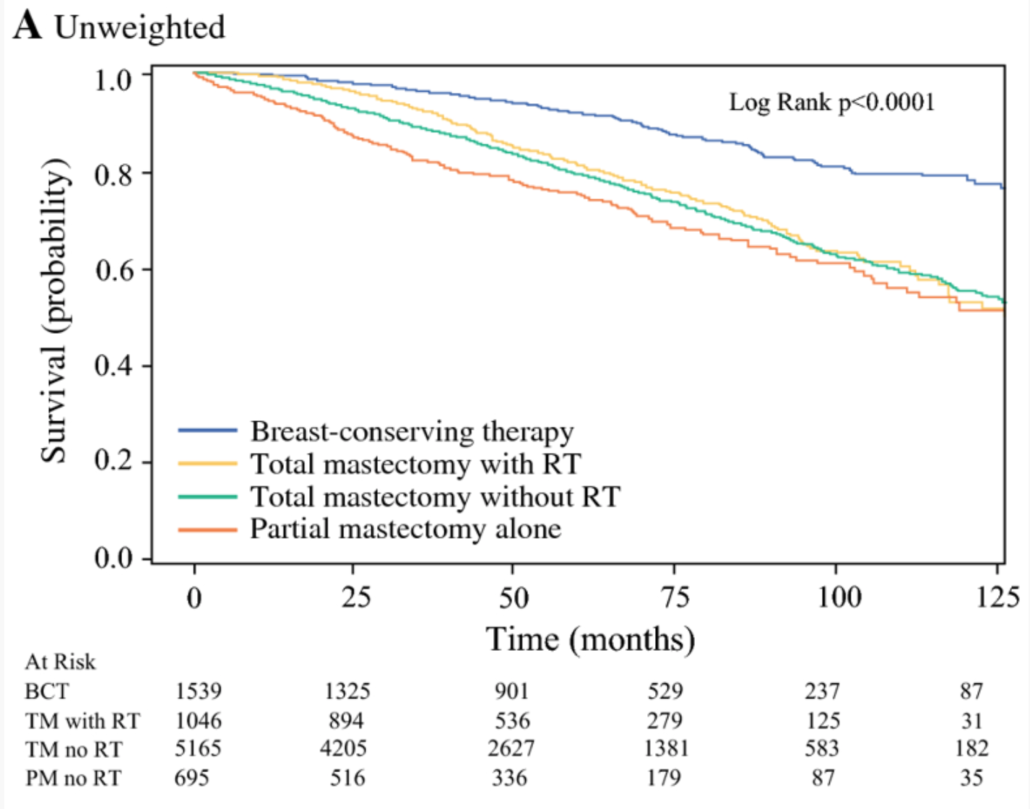6 March 2019
The American Society of Breast Surgeons (ASBrS) held their annual meeting in Dallas last week. This meeting usually draws about 1500 breast surgeons (just under half the ASBrS membership) from around the world, for several days of pre-meeting courses, didactic sessions, and research presentations. In addition to the science, the meeting provides opportunities for breast surgeons in all types of practice settings and at all levels of training and practice to network and learn from each other.
The following covers some highlights from the general session.
The meeting started off with the Critical Issues in Breast Cancer Forum: Changing Paradigms for Breast Cancer Surgery. Dr. Cary Kaufman presented an update on current clinical trials for cryoablation for breast cancer. Cryoablation is a technique that freezes the tumor, using a small probe placed into the tumor (similar to a needle biopsy) under local anesthesia. There are several types of ablative therapy including laser, radiofrequency, high-frequency ultrasound, and cryoablation. Because cold is a natural anesthetic agent, patients undergoing cryoablation do not need any sedation, and the procedure is performed while they are awake.
Cryoablation was initially tried with benign tumors (fibroadenomas). In many cases, the fibroadenoma reabsorbed, leaving no mass and only a tiny (3 millimeter) scar. Multiple studies have looked at the use of cryoablation for breast cancer, and most have restricted therapy to patients with small (1.5 cm or smaller) estrogen receptor positive, Her2/neu negative tumors. I participated in a national multi-center trial, the ACOSOG / ALLIANCE Z1072 trial, which was published in 2016 and demonstrated that cryoablation was successful in the majority of these patients. All patients in the ACOSOG / ALLIANCE Z1072 study underwent surgery within one month of the ablation, so that the tumor site could be removed and evaluated. Several subsequent studies have looked at cryoablation for breast cancer without surgery. The longest follow up was from Dr. Fukuma in Japan. After 12 years of follow up, he reported 3 local (in-breast) recurrences in 304 patients. Combining 3 published trials, Dr. Kaufman noted that local recurrence rates range from 0.98 – 1.4%, and he concluded that this is extremely promising technology. He also noted that cryoablation of breast cancer appears to have an immunologic benefit – when the tumor cell membranes are disrupted by the extreme cold, the patient is exposed to tumor antigens, which may prompt antibody formation. It is very premature to determine if this immunologic effect will help reduce recurrence rates.
Dr. William Small presented updates on 3 clinical trials of intraoperative radiation therapy (IORT). An advantage of IORT is that it is delivered at the time of lumpectomy, in the operating room, as a one-time treatment. A disadvantage is that status of the lumpectomy specimen margin and lymph nodes are not known at that time. If it is found on final pathology that there are positive margins, external beam radiation is recommended, and at least one trial noted that approximately 30% of patients who received IORT required additional whole breast radiation. Most studies of IORT have been limited to “low risk” lesions – small, low grade invasive cancers in older women. He discussed that a criticism of these studies is that some of these women may not have needed radiation therapy at all. Dr. Small noted that local recurrence rates are slightly higher (3.3 versus 1.3%) but that statistically, IORT is considered “non-inferior” to whole breast irradiation. He noted that seroma (fluid accumulation) is more common in patients who undergo IORT. He concluded by stating that there is an “acceptable” toxicity, with non-inferior local recurrence. However, as there is relatively short follow up available in low risk patients, he questioned the applicability of this procedure to a broader patient population. A US registry is planned.
Dr. Antonio Toesca presented the results of his study of 100 patients who underwent robotic nipple sparing mastectomy (NSM) and implant reconstruction, and showed a fascinating video which highlighted the precise and meticulous dissection, along with improved visualization, compared to a standard surgical procedure. The average incision size was a little over 1 inch, and the specimen was removed intact (in one piece). The procedure averaged 1 hour and 18 minutes longer than their standard for a nipple sparing mastectomy and implant reconstruction (3 hours, 36 minutes for the robotic procedure. Patients who underwent the robotic procedure were less likely to have axillary web syndrome and reported Improved physical, psychological and sexual well-being.
Why could performance of NSM using robotic technology become important? Dr. Tina Hieken presented the results of her study (abstract 580759, page 31) showing that as experience with the procedure has grown, indications are expanding and patients who previously were not candidates for the procedure are now being considered. A NSM is a technically challenging procedure, and it takes a toll on the neck and back of a surgeon. A 2017 study published in JAMA Surgery noted a high incidence of work-related musculoskeletal disorders among surgeons and interventionists. Dr. Katherine Kopkash presented her research (abstract 51837, page 52) using intraoperative electromyography (EMG) on the surgeon to assess muscle strain during NSM. Of course, oncologic safety is the primary concern, and more study on the long-term outcomes (as well as costs) of robotic procedures is required.
The next session was Emerging Strategies in Breast Cancer Care, which focused on “de-escalation” of surgical therapy. Dr. Anna Weiss provided an update of clinical trials evaluating active surveillance for low-risk ductal carcinoma in-situ (DCIS): COMET, LORD and LORIS. Approximately 60,000 cases of DCIS are diagnosed annually. Patients undergoing active surveillance do not have surgery, some are treated with endocrine therapy, and all undergo regular monitoring. This is a accepted option in select cases of prostate cancer, and Dr. Weiss noted that there is no difference in overall survival in patients with low-grade DCIS who do not undergo treatment. The LORD and LORIS trials are open in the UK and the COMET study is open in the US. (Additional perspective)
Dr. Henry Kuerer presented his research on the percutaneous management of breast cancer in the setting of a pathology complete response (pCR) following neoaduvant (before surgery) chemotherapy. He noted that for survival and recurrence matter most, but side effects and complications are significant concerns for both patients and physicians. I’ve recently covered details of his research on this blog.
Some of the twitter conversation related to this talk included patients who noted that they would rather undergo surgery than chemotherapy. It is important to note that the patients involved in this study are those who were going to be treated with chemotherapy regardless of surgical therapy because they have triple negative or Her2/neu positive breast cancer. In these patients, systemic (whole-body) therapy is necessary due to the higher likelihood of metastatic disease. Surgical therapy in these patients, especially the “exceptional responders”, may not improve outcomes, but of course more study is needed. Surgery remains the standard of care for breast cancer therapy.
Dr. Judy Boughey discussed several cooperative group trials evaluating management of the axillary (underarm) lymph nodes, and these studies are also focusing on how we can safely de-escalate axillary surgical therapy after neoadjuvant chemotherapy. This is an area that is rapidly evolving with expansion of the criteria for a less aggressive approach to the axilla.
In a session on Evidence-Based Prevention and Management of Surgical Complications, Dr. Suzanne Klimberg presented on chronic post-mastectomy seroma. A seroma is a fluid collection – fluid normally accumulates after mastectomy which is why drainage tubes are left in place. Normally, drains can be removed after 7-14 days, but about 30% of patients will develop prolonged drainage. This is a frustrating problem for patients and physicians as the persistent fluid can be uncomfortable, may increase the risk of infection, and may delay the start of planned chemotherapy or radiation. She noted that a surgical technique to close the tissue known as “quilting” can reduce the rate of chronic seroma, but that it results in excessive skin dimpling and has a significant impact on the cosmetic results. She stated that additional drainage tubes, various “sealant” agents and compression (such as wearing an ace wrap) are not effective. The area may be sclerosed (scarred) by instilling talc or antibiotics, and in some cases, re-operation to remove the inflamed tissue is indicated. Otherwise she recommended patience and repeat aspirations. She noted that there are no ways to successfully prevent seromas from forming.
Dr. Amal Khoury presented on chronic post-mastectomy pain, and noted that persistent pain occurs in 25-60% of patients undergoing any type of breast surgery. It is thought that this chronic and at times severe pain is due to damage to and neuroma formation of the cutaneous (skin) branches of nerves that run along the 4thand 5thribs, which are roughly at the inframammary fold (bra line below the breast). These cutaneous nerve branches are often not visible at the time of surgery. She noted that the pain syndrome it is often not recognized, and when recognized it is often not treated effectively. She stated that injections with a combination of long-acting local anesthetic and steroid (in a very small dose) at the trigger points is more effective than taking pain or other medications, and in their study at UCSF, 91% of patients required only one injection for lasting relief.
The next session was Practical Considerations for Systemic Treatment. Dr. Judy Boughey reviewed the I-SPY2 clinical trials, which utilize an innovative “adaptive randomization” approach in patients who are undergoing neoadjuvant chemotherapy for triple negative, Her2/neu positive, or other high risk breast cancers. pCR rates are assessed, and drugs that are successful move up higher in the randomization algorithm. This study and its flexible randomization protocol have accelerated the use of some novel agents. Patient reported outcomes assessing quality of life, fear of recurrence, symptoms and side effects are being assessed. If drug response rates are similar, the “winner” may be the one associated with fewer side effects. Dr. Barry Rosen discussed specific strategies to identify the previously involved axillary lymph nodes when chemotherapy is performed prior to surgery. Dr. Elizabeth Mittendorf presented on breast cancer immunotherapy and surgical implications of these treatments. She noted that one agent, atezolizumab, is currently approved for use in patients with metastatic triple negative breast cancer. She noted that there are concerns about wound healing complications with these agents but unfortunately the clinical trials did not specifically assess for this. In addition, she noted that some immunotherapy agents are associated with development of adrenal insufficiency – this complication has only been reported in a small percentage of patients, but it is an important consideration in any patient who is going to have surgery.
A session was held on breast imaging. Dr. Molly Sebastian presented on the impact of breast density on breast cancer risk, noting that it is more difficult to screen patients with dense breasts, and that these patients are also at increased risk for developing breast cancer. The associated breast cancer risk increases with the level of density. Approximately 50% of women in US are considered to have dense breast by mammogram, and she cited a 2010 study that found that 30% of breast cancers could be linked to highly dense breast tissue. Contributors to increased density include younger age, use of hormone replacement therapy, race (Asian), diet (Western), alcohol use, and hereditary factors. She did stress that the presence of a germline genetic mutation (such as BRCA 1/2) conveys a much higher level of risk (regardless of density) than breast density itself.
Dr. Brigid Killelea discussed balancing high-risk screening (which usually includes MRI) with the concerns about gadolinium toxicity. Gadolinium is a “rare earth heavy metal”, and is used in the contrast material that is administered (using an intravenous line) when breast MRI is performed. Acute allergic reactions are uncommon but as gadolinium is excreted through the kidneys, there are concerns about the potential for kidney damage especially in patients with pre-existing renal insufficiency. Nephrogenic systemic fibrosis (NSF) is an unusual condition that results in progressive deposition of gadolinium in the skin. It has also been found that the number of exposures to the linear form of gadolinium (as opposed to macrocyclic, which is what is most commonly used with breast MRI) correlates with increasing deposits in the brain. More research is needed to determine if this leads to an increased risk of Parkinson’s or other diseases. Studies evaluating “fast” MRI protocols are ongoing but they still use gadolinium contrast. Some work is being done with non-contrast MRI and Dr. Killelea noted that it shows some promise in detecting certain lesions.
In the session on Ethical Issues in Breast Cancer Surgery, Dr. Rachel Greenup discussed how to manage the situation when the principles of respect for patient autonomy conflict with the standard of care. She noted that patient autonomy allows for us (as physicians) to educate but not to decide care for patients, and that poor physician-patient communication is a key factor in patients opting for non-standard care. Factors associated with patients declining standard therapy include a negative first experience, an uncaring / insensitive / unnecessarily harsh oncologist, fear of side effects, and belief in the efficacy of alternative therapy. In regards to endocrine therapy for breast cancer, she noted that unmanaged side effects are a significant contributor to stopping therapy. She also presented data showing poorer outcomes in patients who declined standard therapy, and that many, when faced with disease progression, did then opt for conventional treatment. She recommended that physicians review and present evidence to their patients in an understandable way, taking time to acknowledge fears and address patient barriers to treatment, provide time to adjust to diagnosis, suggest a 2ndopinion, and avoid abandonment or fear tactics. She also suggested that physicians be more open (when medically safe) to the combination of alternative and standard therapy. She stressed that patient autonomy is the priority, and that open communication can help align patient-centered care with evidence-based care.
Dr. Terry Sarantou discussed the ethical issues of obtaining informed consent when performing a new surgical procedure, noting that there is FDA oversight for new drugs and surgical devices, but not for surgical procedures. He stressed that informed consent is a communication process, not a form to be signed.
Recognizing the role that surgeons play in the current opioid crisis, Dr. Sarah DeSnyder discussed proper prescribing of narcotics in breast surgery. There was also an abstract presentation by Dr. Betty Fan (abstract 5808940, page 27) on this subject. She noted that women who expected postoperative pain or those who reported higher preoperative distress used more postoperative opioids for pain management. She stressed that physician and trainee education about proper prescribing is critical as is setting patient expectations for postoperative pain and providing non-narcotic options. The use of nerve blocks, long-acting local anesthetic agents, acetaminophen (Tylenol) and ibuprofen were also discussed.
Photographs are an important part of breast and reconstructive surgery to document results both for patient and physician education as well as for quality assurance, and Dr. Toan Nguyen reviewed some of the ethical, legal and technical considerations to protect patient confidentiality and privacy. The ASBrS statement on this issue has been published in the Annals of Surgical Oncology.
In the session covering New Perspectives on Old Problems, Dr. Lee Wilke noted that with improved surgical techniques, breast conservation is now appropriate for select patients with more than one tumor in the breast. She did note that in up to 20-30% of patients with more than one tumor in the breast, the tumors are different subtypes, which may have implications for therapy – so pathologic analysis needs to be performed on all lesions. Dr. Stephen Grobmyer reviewed the current literature on local (in-breast) recurrence, noting that repeat breast conservation may be appropriate in some patients. However, if repeat radiation is performed, there is a higher risk of skin toxicity and potentially unacceptable cosmetic results. In addition, for left-sided breast cancers, repeat radiation raises concerns about cumulative radiation damage to the heart. Repeat lumpectomy without radiation is associated with a 20-40% risk of local recurrence. IORT may be utilized in some patients, but studies are ongoing and data is limited.
Dr. David Euhus discussed that genetic testing does not only potentially impact the surgical procedure that is recommended, but may influence the decision for radiation therapy as well as systemic therapy. In addition, results of genetic testing may impact surveillance for additional breast or other cancers in the patient as well as recommendations for family members. The ASBrS recently updated their genetic testing guideline, recommending that genetic testing be considered for newly diagnosed breast cancer patients. (Additional perspective)
In the session on Benign Breast Disease, Dr. Jane Mendez reviewed breast fistulas (persistent drainage through the skin) and infections, and Dr. Vincent Reid reviewed some of the non-malignant masses that can develop in the male breast. Dr. Katrina Mitchell, who is a breast surgeon as well as a certified lactation consultant, provided recommendations for management of post-partum patients who develop mastitis or breast abscess. One of the key recommendations was that patients should continue breast feeding (better than pumping for keeping the breast empty) and that patients do not need to “pump and dump” the milk while on antibiotics.
Dr. Stephanie Valente discussed breast pain, which is a common problem that frustrates both patients and physicians. Pain is a symptom of breast cancer in less than 2% of cases. Suggestions for treatment include decrease caffeine, nicotine, and dietary fat intake, and consider supplementation with essential fatty acids such as evening primrose oil (EPO) or vitamin E. However, she noted that that some studies show that EPO and vitamin E are no better than placebo. Both flaxseed and chasteberry have shown to be effective. Diclofenac (a non-narcotic pain medication) gel can be effective but it needs to be used for several weeks before improvement is seen and it is expensive. In severe cases, danazol (an androgen hormone) or tamoxifen can be used but are associated with significant side effects.
There were several sessions on oncoplastic surgery. Oncoplastics refers to combining oncologic (cancer) surgery with attention to cosmetic outcomes. Basic principles include placing the incision in the least conspicuous place and closure of as much of the breast tissue once the tumor has been removed as possible to minimize, or preferably avoid, a depression in the area. More advanced techniques include rotation flaps and mastopexy (lift) that may be performed by breast surgeons or breast surgeons collaborating with their plastic surgical colleagues. There was also a session discussing some of the advanced microvascular procedures that are being studied to treat lymphedema as well as a video session showing some basic techniques to perform a better (flat) closure for patients undergoing mastectomy without reconstruction.
The keynote address was delivered by the actress Kathy Bates. Ms. Bates underwent a bilateral mastectomy for breast cancer and has bilateral arm lymphedema. She is a spokeswoman for the Lymphatic Education and Research Network, working to educate, support, and advocate for patients who have lymphedema. She delivered a moving and unique address to the group, combining science and her personal patient perspective. An abstract (abstract 581304, page 22) presented during the meeting demonstrated that postoperative surveillance with bioimpedence spectroscopy compared to tape measure resulted in a 10% decrease in the number of patients requiring complex decongestive physiotherapy. However, these results, which were a planned interim data analysis, did not reach statistical significance.
The new ASBrS screening mammography guidelines were released at the meeting. They recommend formal risk assessment starting at age 25 and a risk-based approach to screening, as well as annual mammography starting at age 40 for average-risk women. (Additional commentary)
All of the research abstracts and posters can be found here. There were many interesting and thought-providing presentations, but it is important to remember that abstracts represent incomplete data and have not been subject to the peer-review process. The oral abstracts that were presented will be published in manuscript form later this year. The poster gallery can be found here (not all posters have been uploaded by the presenters).
As usual if anyone is interested in one of the articles referenced but does not have access, or wants additional information, please send your email address to me: contact at drattai dot com and I will be happy to respond.
This post has not been endorsed by the American Society of Breast Surgeons.









